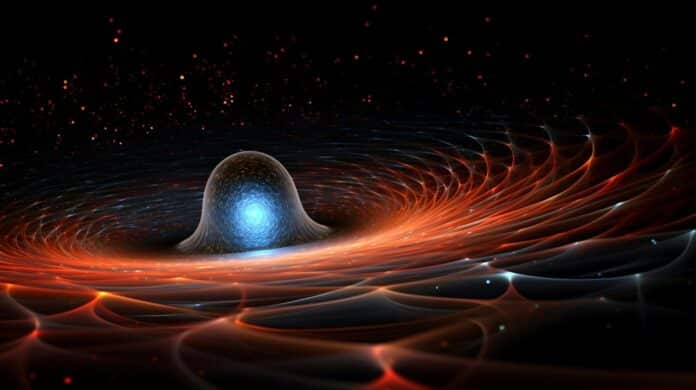Spacetime is affected by gravitational waves, which compress it in one direction and extend it in the other. Because of this, the most advanced gravitational wave detectors available today are L-shaped and use interferometry—a measurement technique that looks at the interference patterns created by two light sources combined—to determine the relative lengths of the laser. The laser’s size must be measured precisely to detect gravitational waves. This is similar to measuring the width of a human hair to determine the distance to the nearest star, which is around four light years away.
As a pivotal component of the LIGO-Virgo-KAGRA (LVK) Collaboration, scientists at the University of Minnesota Twin Cities College of Science and Engineering co-led a groundbreaking study by an international team. This collective endeavor is poised to transform the detection of gravitational waves—ripples in space and time, underscoring the power of collaboration in our scientific community.
Through this pioneering study, scientists aim to send alerts to astronomers and astrophysicists within 30 seconds after the detection. This swift response will deepen our comprehension of neutron stars and black holes and illuminate the genesis of heavy elements, including gold and uranium, heralding a new era of discovery in astrophysics and astronomy.
Scientists enhanced the data from previous observation periods by incorporating simulated gravitational wave signals. This process was designed to showcase the software’s performance and the effectiveness of recent equipment upgrades.
The program is designed to identify the signal’s shape, monitor its behavior, and calculate the event’s masses—such as neutron stars or black holes—involved. This process involves sophisticated algorithms and data analysis techniques. Neutron stars, the smallest and densest in the universe, are created when enormous stars explode in a process known as a supernova.
Upon identifying a gravitational wave signal, this software promptly notifies subscribers—typically astronomers or astrophysicists—of the signal’s location in the sky. Thanks to the specific upgrades implemented during this observation period, scientists can now issue alerts in under 30 seconds after detecting a gravitational wave, a significant improvement in detection speed.
Using this software, scientists can detect the gravitational waves from neutron star collisions that are typically too faint to observe unless we have precise coordinates. This breakthrough allows astronomers and astrophysicists to locate the collision and conduct further studies, potentially revolutionizing our understanding of these cosmic events.
This is the fourth observing run using the Laser Interferometer Gravitational-Wave Observatory (LIGO), and it will continue to observe through February 2025. In the interim, between the last three observing periods, scientists have tirelessly worked on improving the detection of signals. After this observing run concludes, researchers will eagerly delve into the data, striving to make further enhancements with the ambitious goal of issuing alerts even faster.
Journal Reference:
- Sushant Sharma Chaudhary, Gaurav Waratkar et al. Low-latency gravitational wave alert products and their performance at the time of the fourth LIGO-Virgo-KAGRA observing run. PNAS. DOI: 10.1073/pnas.2316474121
